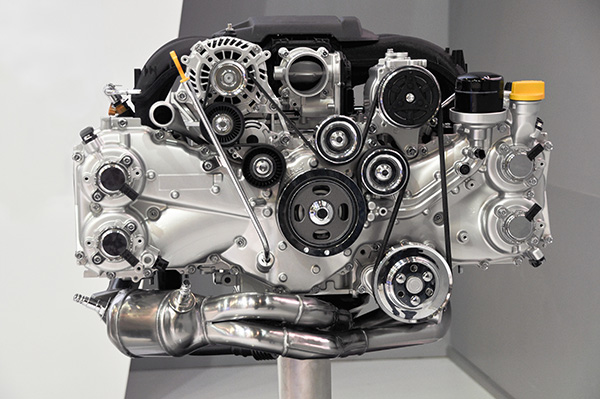
The serpentine belt may not be something you check often, but it's very important for keeping your car running as it’s supposed to. This single belt powers major systems like your alternator, power steering pump, air conditioning compressor, and sometimes the water pump. When it starts to wear out, the results can range from annoying to downright dangerous.
If your serpentine belt snaps while you're driving, you could lose electrical power, overheat your engine, or have your steering become extremely difficult.
What the Serpentine Belt Does
The serpentine belt connects multiple engine accessories to the crankshaft pulley. As the engine runs, the belt spins these components, allowing them to function properly. Without the belt, those systems stop working.
Some older vehicles used multiple belts for different systems, but most modern vehicles rely on a single belt design. This makes inspections and maintenance simpler, but also means that if one belt fails, several systems go down at once.
Look for Cracks or Fraying
One of the most visible signs that your serpentine belt is nearing the end of its life is physical wear. If you can safely inspect the belt (usually visible from the top of the engine), check for:
- Cracks across the ribbed side of the belt
- Fraying along the edges
- Missing chunks or separation between layers
Even small cracks can be a warning that the belt’s material is drying out and losing flexibility. It may still be working today, but it’s unlikely to hold up much longer.
Listen for High-Pitched Squealing
A worn or loose serpentine belt often makes noise, especially right after startup or when turning on the air conditioning. If you hear a high-pitched squeal coming from the front of the engine, it may be due to the belt slipping on one of the pulleys.
This could be caused by a stretched belt, a failing tensioner, or a pulley that’s out of alignment. Regardless of the cause, that squealing noise is a sign that something needs attention.
Check for Performance Issues in Powered Systems
Because the belt drives essential systems, a failing belt can cause symptoms in other parts of the vehicle. For example:
- Dimming headlights or battery warning light
- Loss of power steering assist
- A/C blowing warm air
- Engine overheating if the water pump is belt-driven
These signs often start subtly and get worse with time. If you notice more than one of these issues at once, it could point back to a problem with the serpentine belt.
Pay Attention to Mileage and Age
Most serpentine belts are designed to last between 60,000 and 100,000 miles. If your vehicle is approaching or past that range, and you’ve never replaced the belt, it’s time for an inspection.
Even if the belt looks okay, the material can weaken over time. Heat, oil contamination, and tension wear all take a toll. In some cases, a belt can appear visually fine right up until it breaks.
Don’t Forget the Tensioner
The belt tensioner is responsible for keeping proper tension on the serpentine belt. If the tensioner is weak or worn out, the belt may slip, make noise, or wear unevenly. During a belt replacement, it’s a good idea to inspect or replace the tensioner and idler pulleys as well. This prevents future problems and ensures smooth operation.
A new belt won’t last long if the tensioner is no longer doing its job.
Should You Wait for It to Break
Definitely not. Waiting for a serpentine belt to break is risky. When it fails, you can lose control of key systems in seconds. The steering can get heavy, the battery may stop charging, and the engine can quickly overheat if the water pump is affected.
Replacing the belt as part of routine maintenance is a relatively simple and inexpensive job compared to the damage a broken belt can cause.
Let Ming’s Auto Repair in Allston, MA, Check Your Belt Before It Fails
If you’re unsure about the condition of your serpentine belt or it’s been a while since your last inspection, bring your vehicle to Ming’s Auto Repair in Allston, MA. Our technicians will check for signs of wear, inspect your tensioner, and let you know if replacement is needed.
Don’t wait for the belt to snap when you’re miles from home. Let us keep your engine accessories running smoothly and prevent unnecessary breakdowns.